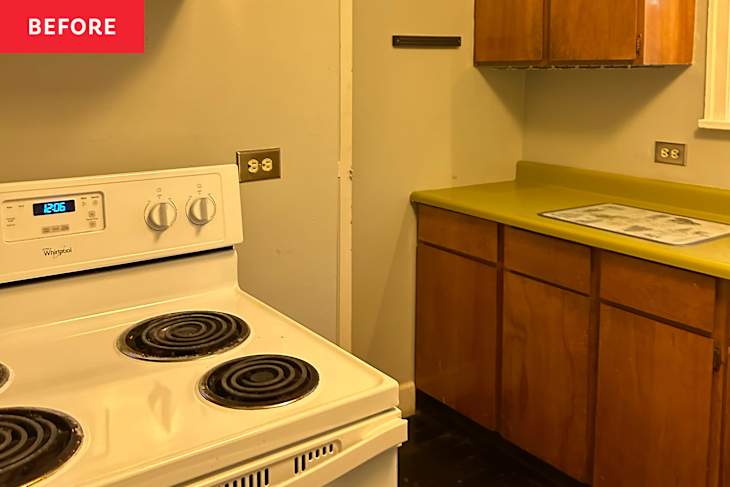

When my partner and I bought our 1928 Arts & Crafts bungalow home in Portland, Oregon, at the end of 2023, I knew the kitchen was going to be a project. The floors were painted black and chipping off in large flecks. The countertops were avocado green and streaked with rust stains. The walls were gloomy and gray, and made the whole room feel like a basement. And the appliances? Beyond saving.
I’ve always loved design and DIY — I grew up watching my dad build our house, and I’d just finished personalizing my previous apartment — so I thought I could handle this, my biggest project yet.
And my biggest inspiration for the “after” was deVOL kitchens and their English country aesthetic and warm, lived-in color palettes. I also wanted to bring back some of those classic details that would’ve been original to the 1920s bones of our house.
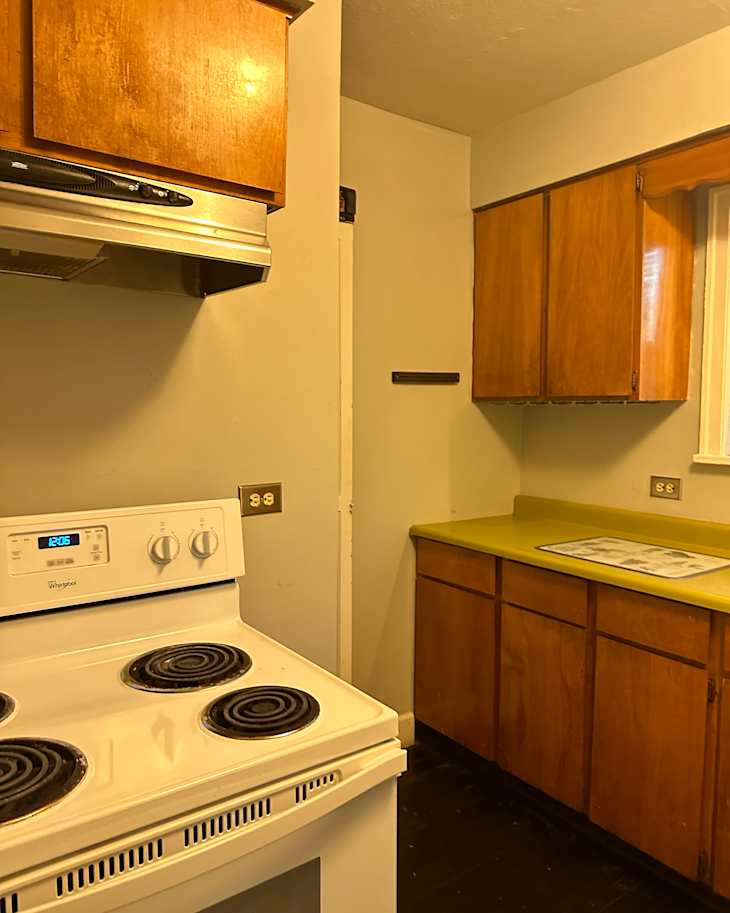
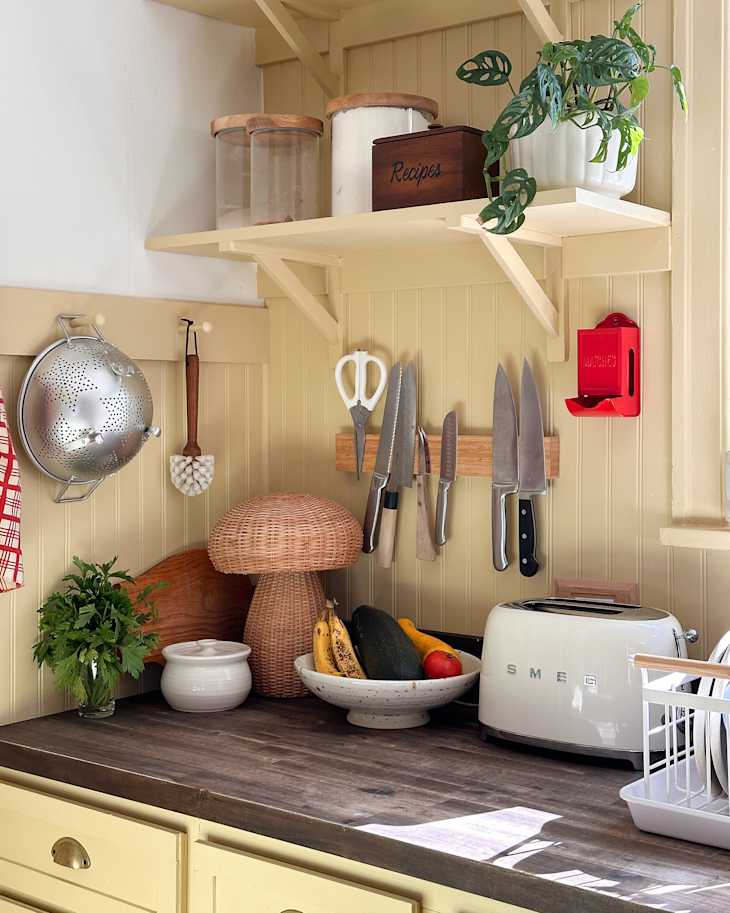
We gutted the kitchen down to just cabinet boxes.
Structurally, the cabinet boxes were still solid, and buying all new cabinets wasn’t in the budget. The demo was messy, a little intimidating, and there was a moment when I stood in the middle of it all questioning my choices and the reno ahead.
But there’s also something so cathartic about swinging a sledgehammer at a soffit you hate. (I highly recommend.) Plus, once everything was stripped out, I could finally see the potential hiding under all that avocado green despair.
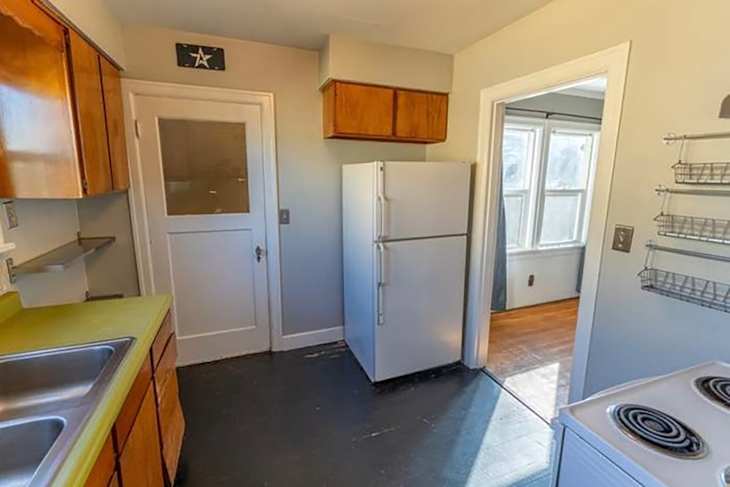
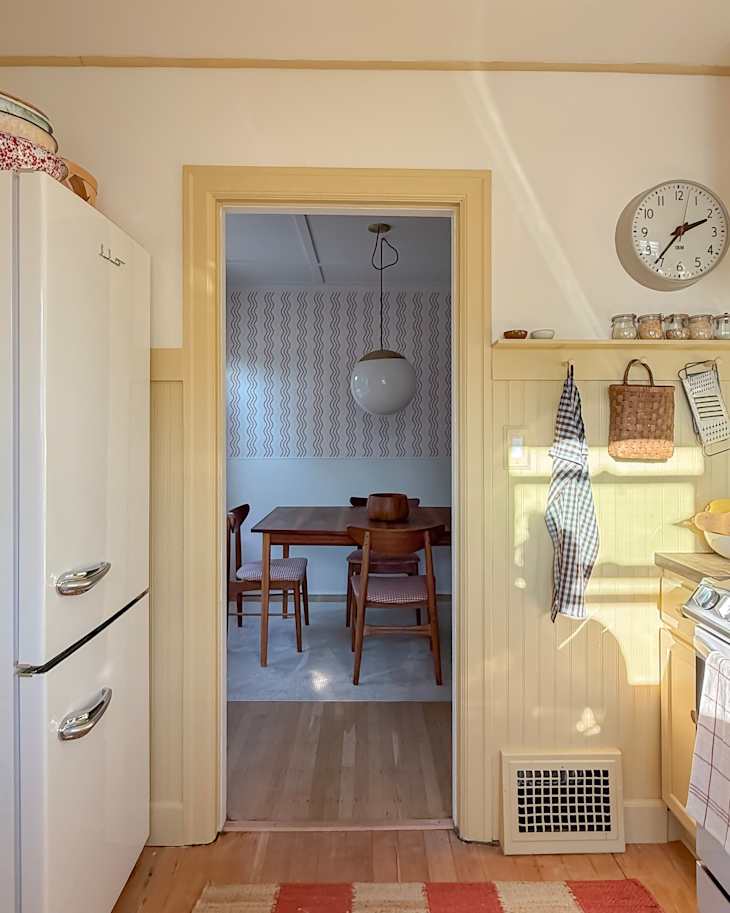
We refinished the floors everywhere.
After planning to at least attempt to refinish the hardwood floors in the kitchen, we actually decided to refinish every floor in the house, which turned into one of those projects that’s way messier than you think it will be. Thankfully, we weren’t living there yet, so we could let the house be a big dust cloud without consequence.
When the original wood finally came back to life, the kitchen instantly felt brighter and warmer. It set the tone for the whole space and made the mess worth it. The whole process was also way more cost-friendly than I expected. If you’re willing to rent a sander and put in some elbow grease, it’s one of the best bang-for-your-buck renovations you can do.
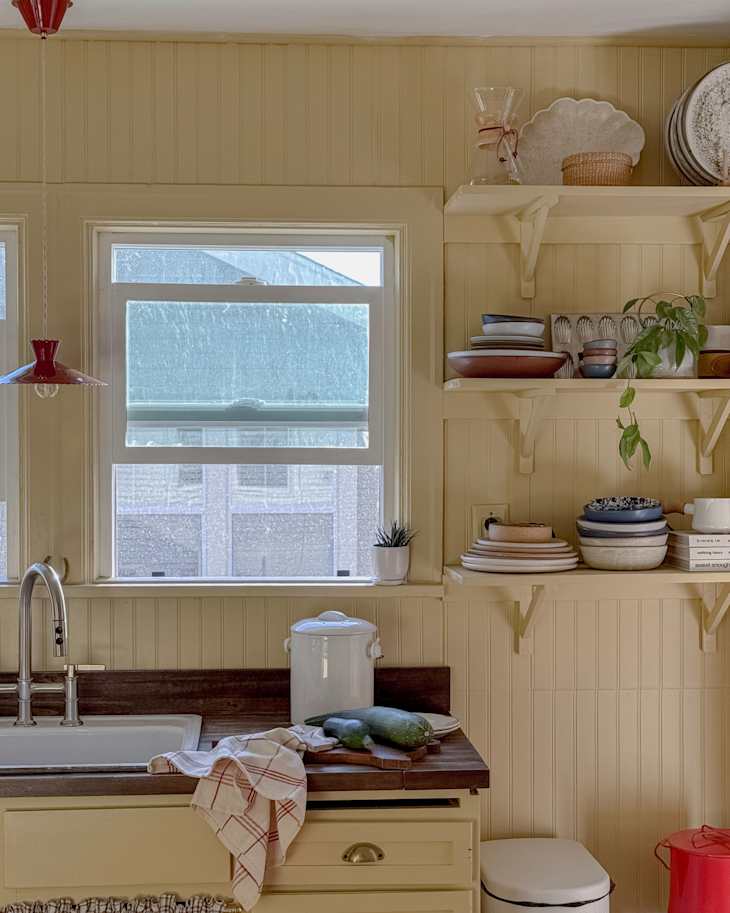
Installing the countertop and sink were first-time DIYs.
Next came butcher-block countertops from Lowe’s, and a vintage Crane sink I found at the ReBuilding Center for $35. Originally, there were no countertops by the stove, so I added skinny cabinets and countertops to create extra prep space while cooking.
Neither of us had ever installed a sink before, and we only had one shot to get the placement right and cut the hole correctly. We spent a good four hours off and on the phone with my dad, measuring and re-measuring before finally committing to the cut. There were tense moments, but we figured it out. The sink turned out perfect, and honestly, the fact that it was $35 and we installed it ourselves makes me love it even more.
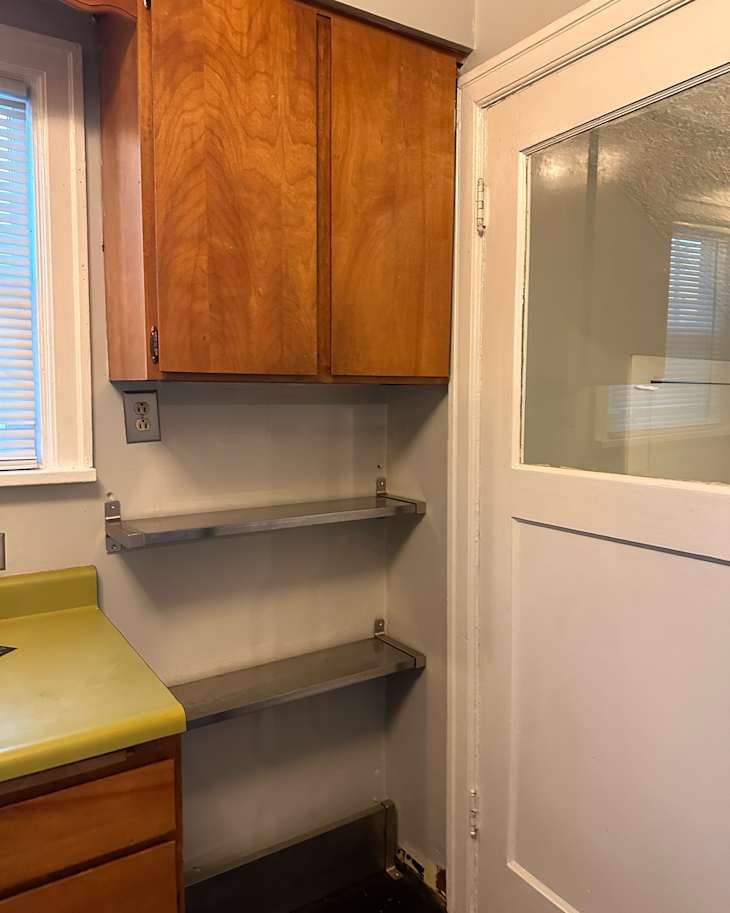
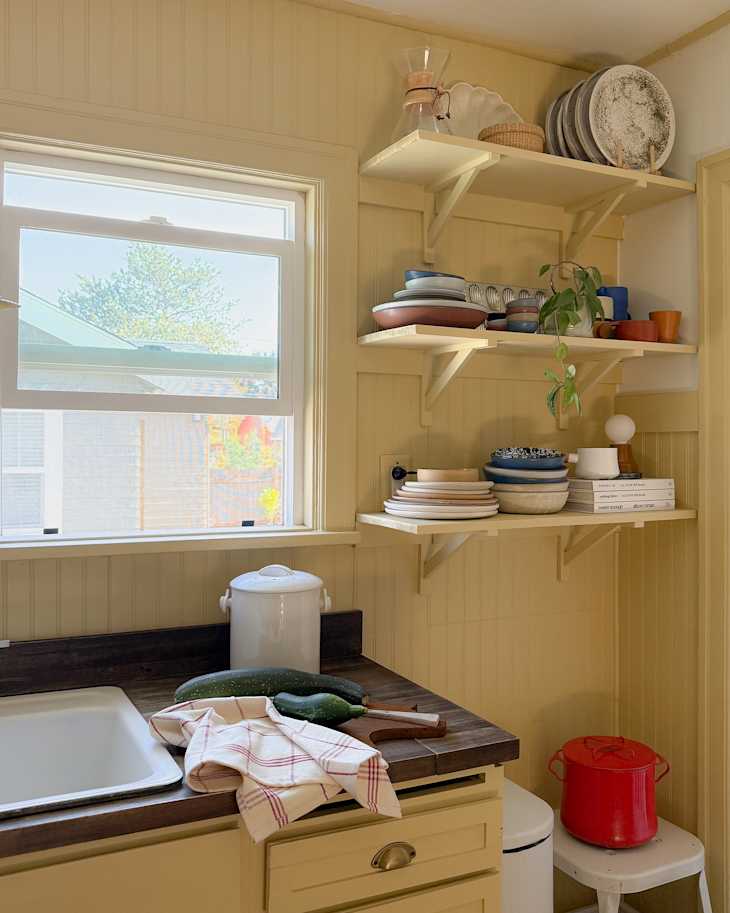
We added fun wood details.
We installed a tall cabinet next to the fridge that provides dishware storage on top and a coffee station setup below. My favorite detail is the cutouts I added to the cabinet door here. These were common in Arts & Crafts kitchens — simple shapes like diamonds cut directly into the wood to provide ventilation. In our case, they’re perfect for our 1920s home and they let steam escape from the coffee maker.
I’m planning to make all new custom cabinet doors down the line and add matching cutouts to them, too, because the historically inspired, actually useful detail makes me happy every time I catch a glance.
We also decided to install beadboard on the walls to add some charm (and cover up the plywood the previous homeowners had used in place of drywall), and I built some shelves using leftover wood from a previous project and some simple wooden brackets.
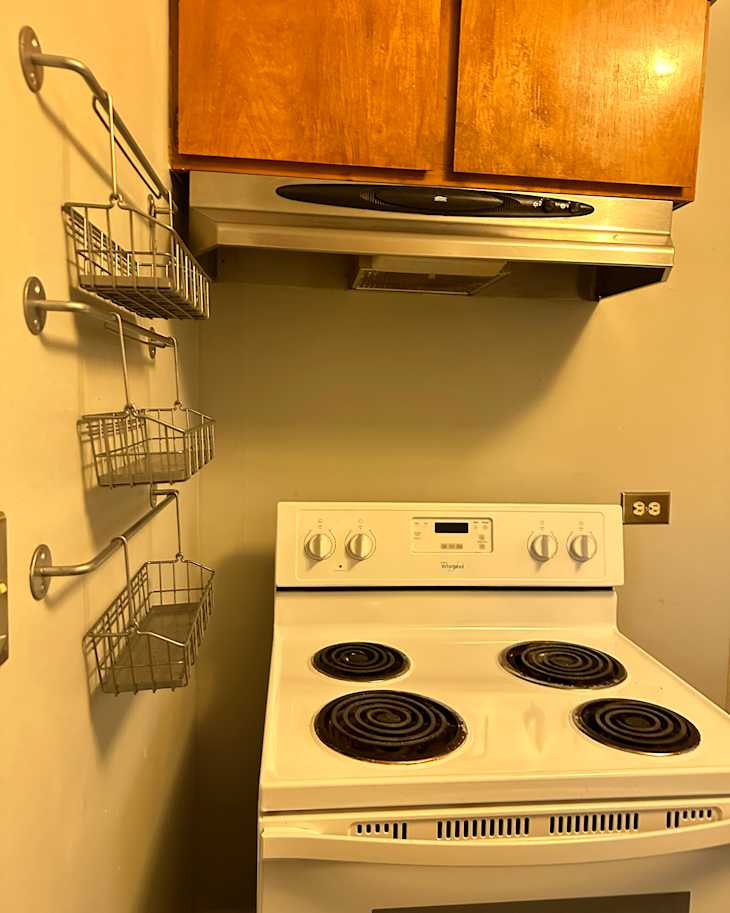
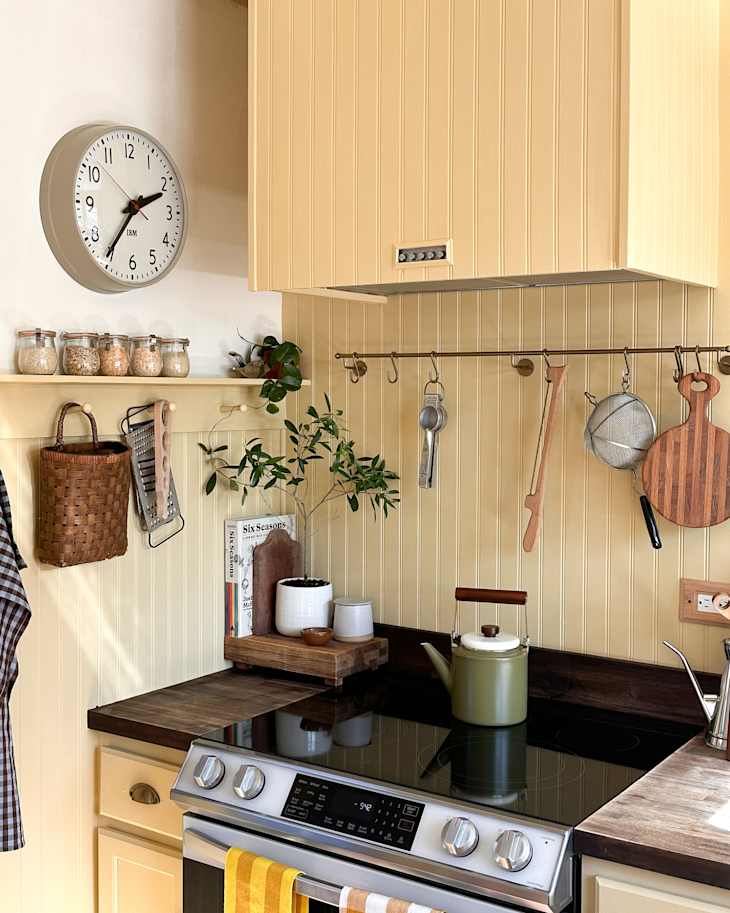
A beadboard range hood is the focal point of the kitchen.
The wall behind the stove is completely covered in beadboard, and I knew I wanted a new hood in the same material so that it would blend in while still standing out. Unfortunately, we ordered the wrong vent hood and didn’t realize until way past the return date.
When my dad came to visit, he built a frame around it so we could mount it, and we wrapped it and added trim to make it look like it always belonged. Since then, it’s become the visual anchor of the kitchen and a reminder that mistakes can turn into meant-to-be design.
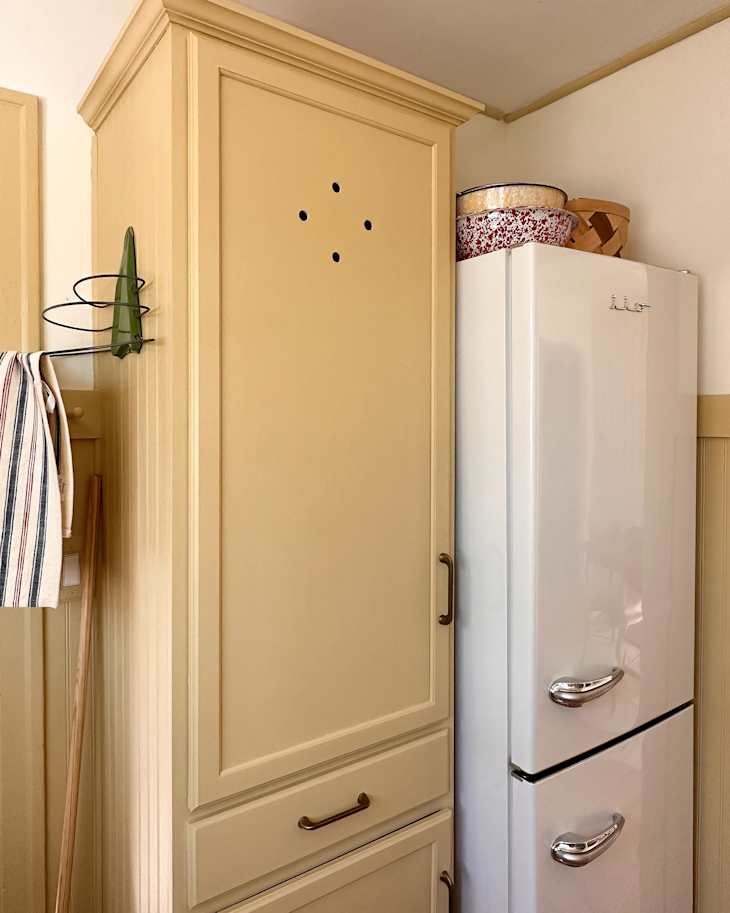
I found a $50 dupe for a popular-but-pricey paint color.
The final step, and the one that truly pulled the whole room together, was painting the walls a warm butter yellow (Benjamin Moore’s Waterbury Cream). The yellow makes the kitchen cheerful — even on Portland’s grayest days.
Paired with the wood tones woven throughout, a collection of my favorite vintage pieces, and the carefully chosen lighting (Schoolhouse’s Alabax and the Floral Brass Pendant from Matilda Goad are the perfect duo), the whole space has this bright, quirky personality that feels like us and feels appropriate for our 1920s home. Now, walking into this kitchen is pure joy, and I can hardly believe it’s the same one from two years ago.